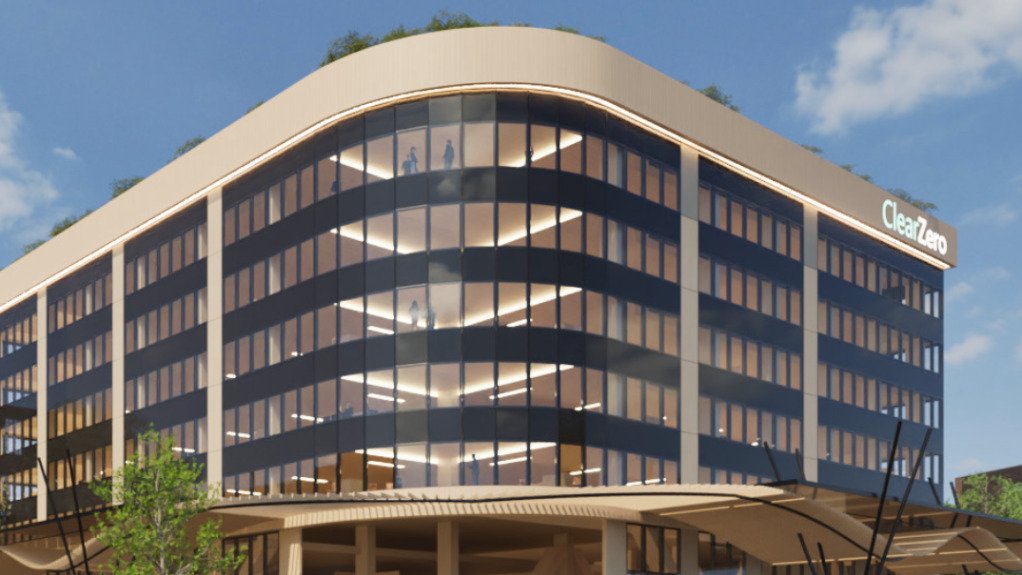Through a collaboration between Australian glass solar technology developer ClearVue and local technology distributor Concept Business Solutions, a novel transparent glass solar panel technology for use in building facades has been launched in South Africa.
Concept Business Solutions will be the licensed distributor of the ClearVue technology in South Africa, which will be branded as ClearPV locally.
ClearPV is an insulated glass unit (IGU) window that can generate up to 30 W of electricity per square metre, while maintaining the window’s transparency and the building’s aesthetics.
Incorporating building-integrated photovoltaic (BIPV) technologies, ClearPV technology can be used as a building envelope solution that supports buildings in achieving sustainability objectives with near net-zero performance.
The range incorporates not only transparent solar glass panels but also opaque solar facades in various styles, as well as solar spandrels, skylights and balustrades. These various components of the building envelope are capable of providing a combined energy output of up to 200 W/m2, resulting in between 50% and 100% of a building’s energy requirements being met.
“Our mission is to support the decarbonisation of the built environment by designing products that improve the energy efficiency of buildings through thermal performance and the production of clean energy on site.
“And we do both. We produce it on site, and of course, it's clean energy,” ClearVue founder and chairperson Victor Rosenberg said at the ClearPV South African launch, in Sandton, on September 12.
He emphasised that the built environment must be included in any meaningful solution to meet global net-zero emission aspirations, as it represented about 40% of yearly global CO2 emissions.
“The built environment requires innovative solutions where energy can be generated to lessen the need to draw power from carbon-producing energy sources. ClearVue is building a bridge between the construction and renewable-energy industries,” he said.
Concept Business Solutions MD Craig Boyd told Engineering News that while opaque solar facade technologies exist on the market, ClearPV is unique because it allows up to 70% of light through, thereby barely affecting visibility at all, while simultaneously providing a thermal benefit to reduce heating/cooling energy requirements through a reduction of the solar heat gain coefficient.
The ClearPV panels are made using polyvinyl butyral (PVB) glass, which is a laminated glass made with a layer of PVB resin sandwiched between two layers of glass. This design enhances the safety and durability of the glass.
The ClearPV technology, which is made up of nano and micro materials, is embedded into the PVB layer.
“We can convert ultraviolet to infrared rays, and then the light is pushed to the edges where it is converted into electricity. We also form a heat shield, because we do not allow a lot of infrared to get through. So it has both thermal and optical properties that can reduce the cooling load by about 22%,” Rosenberg explained.
Presenting the technology, which has been implemented in several successful case studies in Australia, Rosenberg said the average rate of return on the investment is estimated to range between about two to eight years, depending on the size of the investment, applicable jurisdictional benefits and incentives for carbon-reduction investments, advantageous weather conditions, and the building’s energy consumption requirements.
Boyd said that a major South African glass manufacturer was in discussions to assemble the product locally, combining ClearVue’s patented solar technology, manufactured in Australia, with locally made glass panels.
However, he said the aim is to have the full product manufactured in South Africa as soon as possible.
Edited by: Chanel de Bruyn
Creamer Media Senior Deputy Editor Online
EMAIL THIS ARTICLE SAVE THIS ARTICLE
ARTICLE ENQUIRY
To subscribe email subscriptions@creamermedia.co.za or click here
To advertise email advertising@creamermedia.co.za or click here













